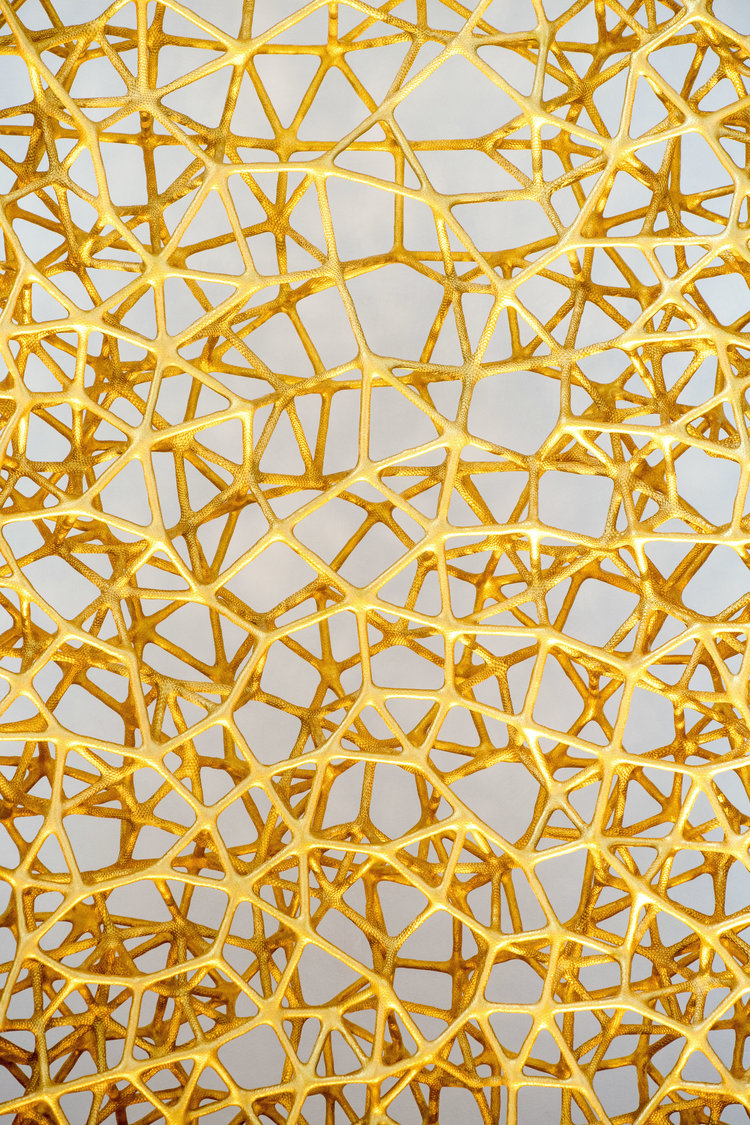Type:
Country:
City:
Year:
Status:
Size:
Services:

Type:
Country:
City:
Year:
Status:
Size:
Services:
Interior
Germany
Altmühldorf
2018-2019
Finished
2,6m x 8m
Consultancy
Computational Design
Technology Development
Additive Manufacturing
Technology
Selective Laser Sintering
Wire Arc Spraying
Design Assist
Digital Modelling
Material Development


Type:
Country:
City:
Year:
Status:
Size:
Services:
Interior
Germany
Altmühldorf
2018-2019
Finished
2,6m x 8m
Consultancy
Computational Design
Technology Development
Additive Manufacturing
Technology
Selective Laser Sintering
Wire Arc Spraying
Design Assist
Digital Modelling
Material Development

Standing 8 meters tall, this sculptural work of art and research is the shining new centrepiece of the late gothic church of Altmühldorf and reflects its future‐oriented spirit through the informed use of latest technologies. The composite material of 3D‐printed Polyamide and wire‐arc sprayed Aluminium create a new efficient bridge between digital design and realisation.s its future‐oriented spirit through the informed use of latest technologies. The composite material of 3D‐printed Polyamide and wire‐arc sprayed Aluminium create a new efficient bridge between digital design and realisation.

Standing 8 meters tall, this sculptural work of art and research is the shining new centrepiece of the late gothic church of Altmühldorf and reflects its future‐oriented spirit through the informed use of latest technologies. The composite material of 3D‐printed Polyamide and wire‐arc sprayed Aluminium create a new efficient bridge between digital design and realisation.s its future‐oriented spirit through the informed use of latest technologies. The composite material of 3D‐printed Polyamide and wire‐arc sprayed Aluminium create a new efficient bridge between digital design and realisation.
The project builds upon the material and fabrication research on the behaviour of metal coated 3d‐printed polyamide parts under long term load cases. While it is known that additive manufacturing can produce polyamide elements to near net shape quality, long term studies show that retardation of these polymers becomes an issue over time making them not applicable to most architectural use cases. As this sculpture is constructed in the context of sacred architecture, longevity is of primary concern and a focal point in the technical development of the project.
To achieve the resolution that is required by design, the components are produced through additive sintering technology using multiple different EOS P 700 series machines running on PA12 material. Through a set of experiments, a coating strategy is developed, that is concerned with the metallization of self‐similar but chaotic elements aiming towards a regular metal layer thickness. Here, rotational motions around multiple axis, together with aluminium wire arc spraying technology are implied, resulting in a thickness controlled and structurally active metal layer that acts as the load bearing component of a composite material system.
After thickness measurements, the 60 different elements are screwed together and prepared for another metal coating phase to structurally connect the metal layer resulting in a globally sound aluminium shell with superior performance compared to standard metallization technologies. For protection against moisture and the right colouring, a final layer of lacquer is applied for a striking and long‐lasting appearance.

The project builds upon the material and fabrication research on the behaviour of metal coated 3d‐printed polyamide parts under long term load cases. While it is known that additive manufacturing can produce polyamide elements to near net shape quality, long term studies show that retardation of these polymers becomes an issue over time making them not applicable to most architectural use cases. As this sculpture is constructed in the context of sacred architecture, longevity is of primary concern and a focal point in the technical development of the project.

To achieve the resolution that is required by design, the components are produced through additive sintering technology using multiple different EOS P 700 series machines running on PA12 material. Through a set of experiments, a coating strategy is developed, that is concerned with the metallization of self‐similar but chaotic elements aiming towards a regular metal layer thickness. Here, rotational motions around multiple axis, together with aluminium wire arc spraying technology are implied, resulting in a thickness controlled and structurally active metal layer that acts as the load bearing component of a composite material system.

After thickness measurements, the 60 different elements are screwed together and prepared for another metal coating phase to structurally connect the metal layer resulting in a globally sound aluminium shell with superior performance compared to standard metallization technologies. For protection against moisture and the right colouring, a final layer of lacquer is applied for a striking and long‐lasting appearance.
